Hassle-Free Ways to Uninstall OmniDiskSweeper
Look for a perfect method to uninstall OmniDiskSweeper for Mac? Have no clue how to find out its leftovers in system disk? See if this tutorial could help you work it out.
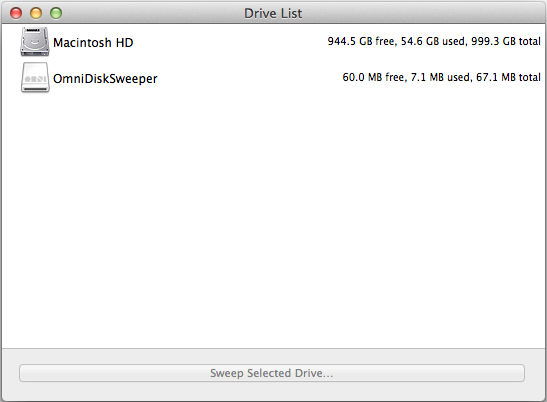
OmniDiskSweeper is a free-to-use app that helps Mac users find and delete large files in their hard drives. Once launched, it lists every disk attached to Mac and also every items in each disk that are sorted by size. However, users must be cautious when deleting files that take up valuable space, because there is no undo button in the app.
The question is: when you uninstall OmniDiskSweeper in classic way, the app itself is gone instantly, yet some items pertaining to this app still remain, occupying certain space on your disk. So, how to thoroughly uninstall OmniDiskSweeper for Mac? Right here we offer two optional solutions to guide you through the uninstallation successfully, and you can choose to take the method you prefer to remove the app.
Osx Uninstaller: Thoroughly Remove OmniDiskSweeper
Desire to get rid of OmniDiskSweeper without trouble? You are highly suggested to use an advanced and reliable uninstaller to easily remove all unwanted apps. Osx Uninstaller is a lightweight yet powerful app designed for all level users to perfectly delete any problematic, stubborn or malicious app on macOS. To completely uninstall OmniDiskSweeper, you just need to do 3 simple steps: launch > select > uninstall.
Watch the video to know how it works to uninstall OmniDiskSweeper:
Here are the detailed steps to remove OmniDiskSweeper using Osx Uninstaller:
1. Quit OmniDiskSweeper if it is running, and then launch Osx Uninstaller.
2. Click OmniDiskSweeper icon, and click Run Analysis to run a scan.

3. Review the components belonging to OmniDiskSweeper, click Complete Uninstall and then Yes in the pop-up dialog box to perform a thorough uninstall.
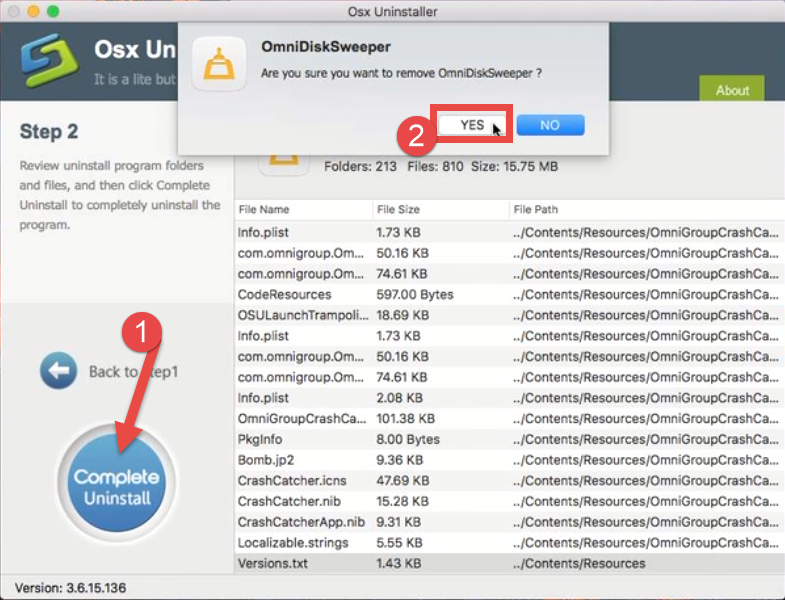
4. Once the removal is complete, click Back to Interface button to re-scan your Mac.
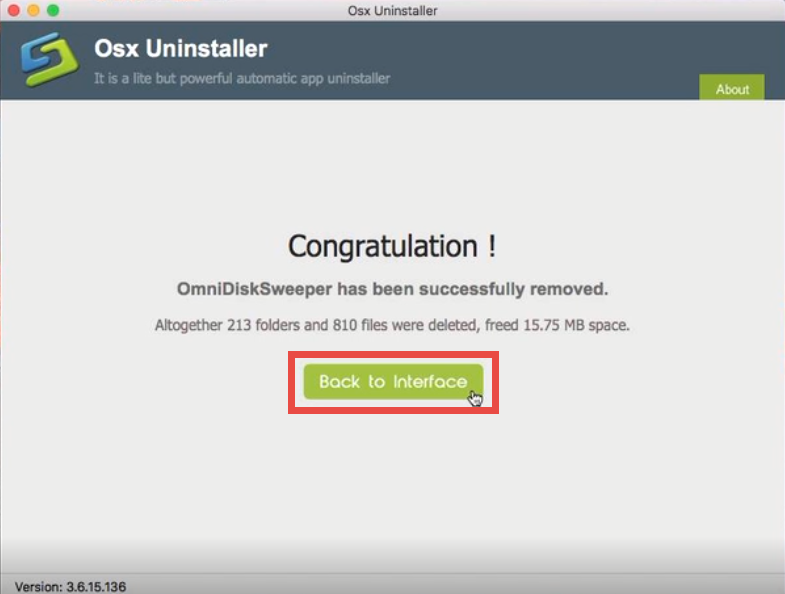
This removal utility allows you to entirely uninstall OmniDiskSweeper with no issues at all. Now the unwanted app should have totally gone from your Mac system.
Why not give Osx Uninstaller a try? I think you’ll love the convenience it brings.
Conventional Steps to Uninstall OmniDiskSweeper on Mac
Undoubtedly, a handy uninstall tool could save you much time and trouble to get rid of OmniDiskSweeper. Yet, if you persist in uninstalling OmniDiskSweeper without using Osx Uninstaller, you can take the standard steps to complete the task. Here are the instructions you can follow to delete OmniDiskSweeper and all its components.
Step 1. quit OmniDiskSweeper
Before the uninstall, you should deactivate all the processes related to OmniDiskSweeper, otherwise you might fail to uninstall all its components. If the app is running, right click its icon on the Dock and choose Quit option. Or you can open up the app window, head to the app name in Menu bar and choose Quit option.
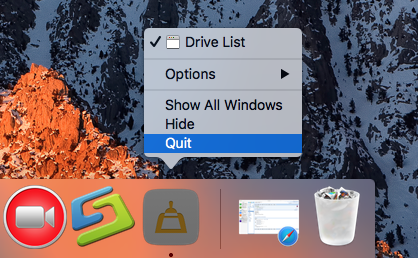
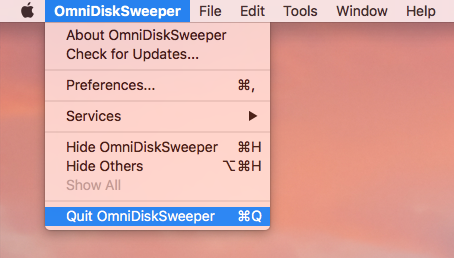
If you cannot quit an app by aforementioned way, then try this force quit option:
- Open up the Activity Monitor from the Dock, Launchpad, or Spotlight.
- Select the process with the name of OmniDiskSweeper, click the Quit Process icon in the left corner of the window, and then choose Force Quit in the poop-up dialog.
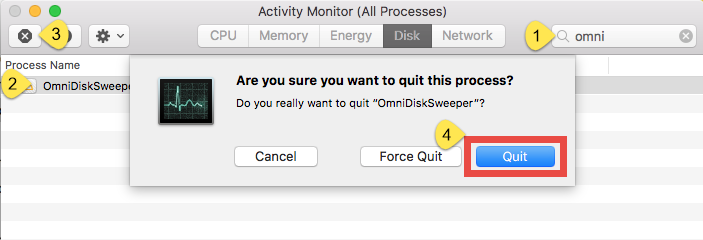
Step 2. uninstall OmniDiskSweeper
Now make sure that you have logged into with an administrator account, and you might be asked for the password when you try to delete something in the Finder.
(1) Delete OmniDiskSweeper in Launchpad
- Click Launchpad icon on the Dock, and type OmniDiskSweeper in the search box.
- Hold on OmniDiskSweeper icon until the icon begins to wiggle and shows “X” .
- Tap the “X” in the left top corner to remove OmniDiskSweeper from there.
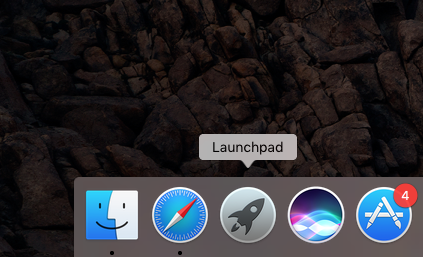
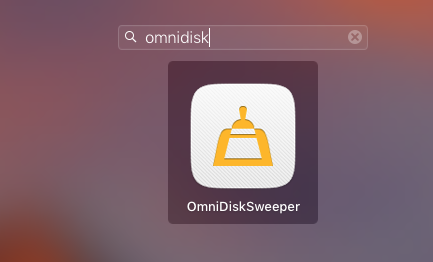
This way works for the apps which are downloaded and installed via the App Store. Once you click the X icon, the app will be uninstalled instantly from your Mac.
(2) Move OmniDiskSweeper to the Trash
- Open the Finder and head to the Applications folder on the left panel.
- Select and drag the icon of OmniDiskSweeper to the Trash in the dock.
- When prompted, type your administrator password in the confirmation dialog.
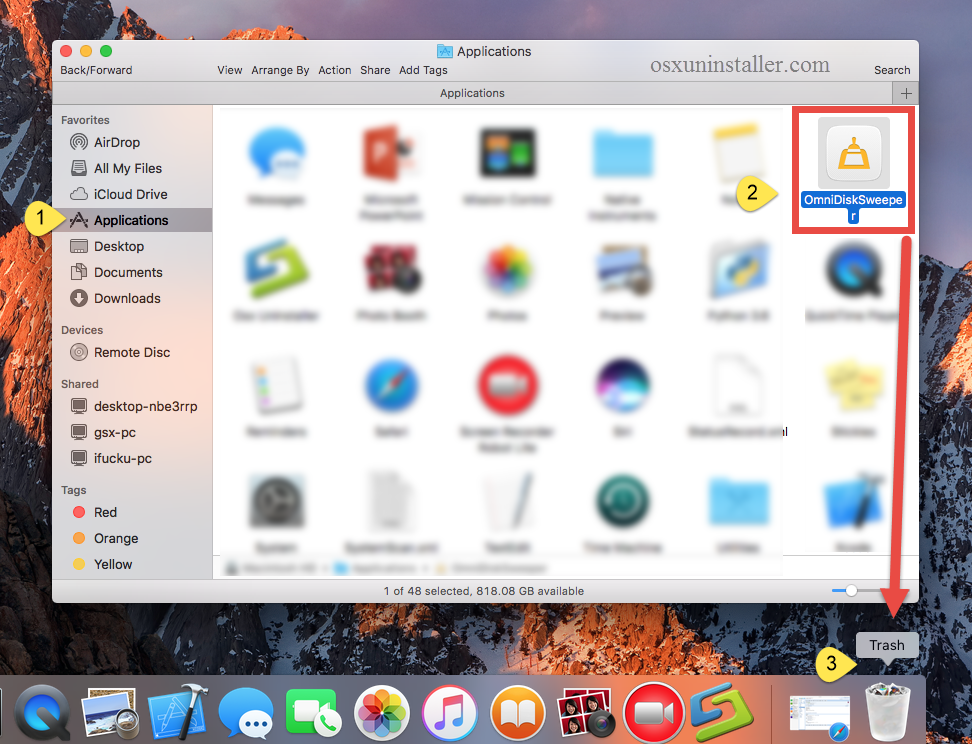
Also, you can uninstall an app by these options: right click on the app icon > choose Move to Trash; select the app > click on File menu > choose Move to Trash.
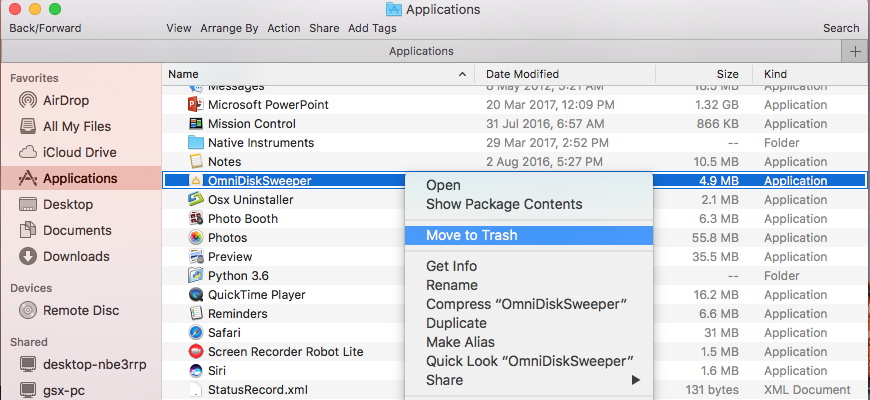
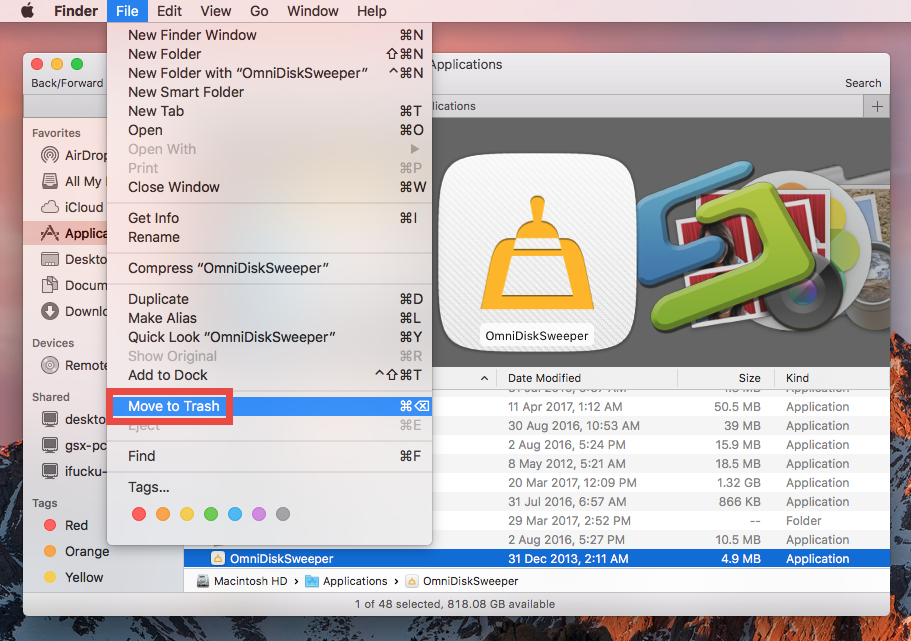
The drag-and-drop move is the universal method to uninstall apps in all versions of Mac OS X. Generally, the app you choose have been removed from sight, but to perform the uninstall you will need to empty the Trash. If you fail to move the app to the trash, try to reboot your Mac into Safe Mode and repeat the steps again.
Step 3. detect associated items
OmniDiskSweeper will create some items (like preference, cache and support files) during the first setup and daily usage. If you decide not to use OmniDiskSweeper any more, you can clear up all its invalid components to enable a clean uninstall and also to reclaim the disk space. Here’s how you can properly remove an app leftovers:
- Open the Finder, click the “Go” from the Menu Bar, and select Go to Folder…
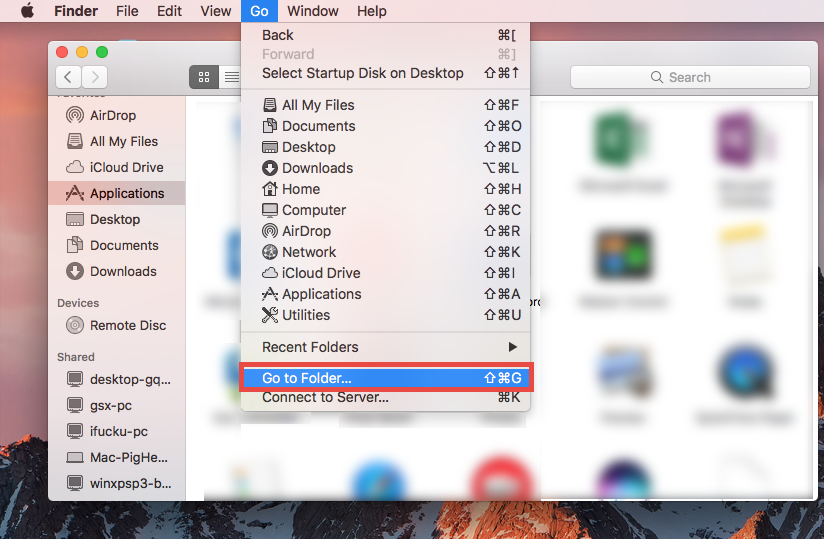
- Type the path of the top level Library on hard disk: /Library, and hit Enter key.

- Search for the files or folders which contains the name of target app or the vendor in the following locations and delete the matched items: /Library, /Library/Caches, /Library/Preferences, /Library/Application Support, /Library/LaunchAgents, /Library/LaunchDaemons, /Library/PreferencePanes, /Library/StartupItems
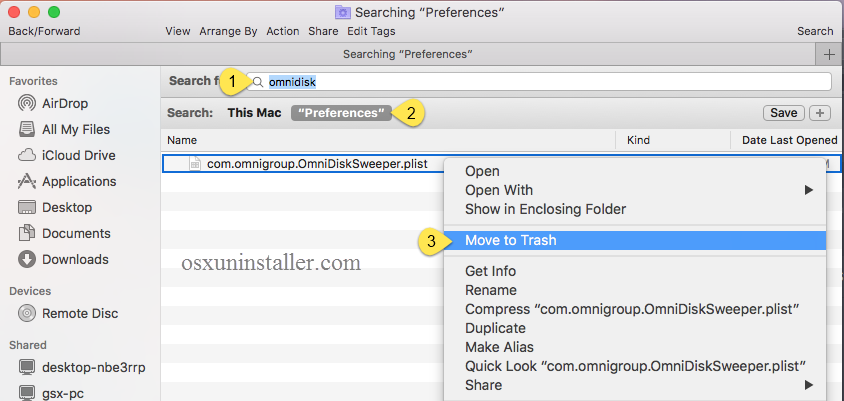
Warming: deleting the wrong items from Library could do harm to your other apps or even system, so make sure to be very careful what you try to delete. Meanwhile, it could be time-wasting going through each folder and searching for app leftovers. Luckily, you can make use of the Search in Finder to hunt down associated files.
- Go ahead to open up the user library inside home folder: ~/Library.
- Type the name of target app or its vendor in the Search Bar, and click on “Library”.
- Identify the matched items, right click on them and choose Move to Trash option.
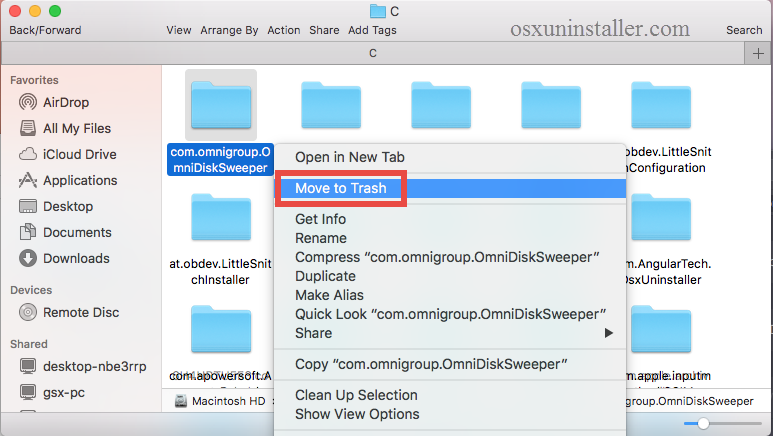
If there are some hidden files you fail to locate or identify, do a web search about the app components. Besides, you can utilize the Terminal app (located in Utilities folder) to list the contents of the directory in question and then delete the offending items.
Step 4. empty the Trash (with caution)
After moving all associated items to the Trash, you can carry out the last step – emptying the trash. Notice: the act is irrevocable, and everything in the Trash will be deleted immediately, so be very cautious when you are performing this part.
- Right click on the Trash icon in the dock.
- Choose Empty Trash and click OK in the pop-up dialog.

Finally we come to the end of manual removing process. Which method do you prefer to uninstall OmniDiskSweeper? Hope this post could help solve your uninstall issues.
Run into issues when trying to uninstall Mac apps? Welcome to contact us for help.


 $29.95/lifetime
$29.95/lifetime